Since Forza Motorsport is so heavily focused on clean racing and fair competition, it is key to extract every bit of pace from the car. Especially in multiplayer modes where all drivers are on equal machinery, learning how to tune your car can make a difference between being a midfielder and winning the race.
How to set up your car in Forza Motorsport
Each car in Forza Motorsport comes with a different configuration by default. Sometimes you will be comfortable with it from the start, and other times you will need some setup changes to adjust it to your driving style. If you ever feel there are moments when you lose control of the vehicle or it doesn't brake or turn how you would like, a tuning configuration can fix those issues and be worth seconds per lap. This guide will help you identify problems with your car's handling and give you the tools to solve them; just remember to only do one setup change at a time and test it before adding anything else.
Car setups guide - Forza Motorsport
Before we can speak of the setups, though, we need to understand Understeer and Oversteer, and when do they happen. If you are a veteran sim racer you probably understand this, but for those who are new to racing or never tried to break it down, here is a simple explanation.
What is understeer in Forza Motorsport?
It's when the front tires lose grip during a corner (before the rear tires do), and even though the steering wheel is turned, the car slides forward. You may recognize the feeling of braking and being unable to turn the car as much as you wanted, so your line goes far away from the apex and you probably end up going off the track on the outside (or having to slow down a lot to avoid this). Understeer can happen at the beginning of a corner when you let off the gas and press the brakes (this is called braking understeer), or it could happen when you accelerate out of the corner (power understeer). Each case is solved differently (we will take a look at that later).
What is oversteer in Forza Motorsport?
The opposite effect is when the rear tires lose grip first, they try to step out and make the car slide sideways (also known as drift). It can be controlled, but if you are sliding you are not going as fast as you could. Oversteer can also happen when you are slowing down to take a corner (known as turn-in oversteer), or when you press the gas and exit the corner (power oversteer).
What is balance in Forza Motorsport?
Balance is the relation of grip between the front tires and the rear tires. As the car takes a corner, there is a battle of grip between the front tires that want to turn, and the rear tires that want to keep going straight. A front-limited car will have less grip on the front than on the rear, and thus will be prone to understeering (i.e. it will keep going straight just like the rear tires wanted). A rear-limited car will have more grip on the front and therefore will be able to turn even when the rear tires can't follow, which causes oversteer.
Related: Differences between Forza Horizon and Forza Motorsport
Tuning setup guide for Forza Motorsport
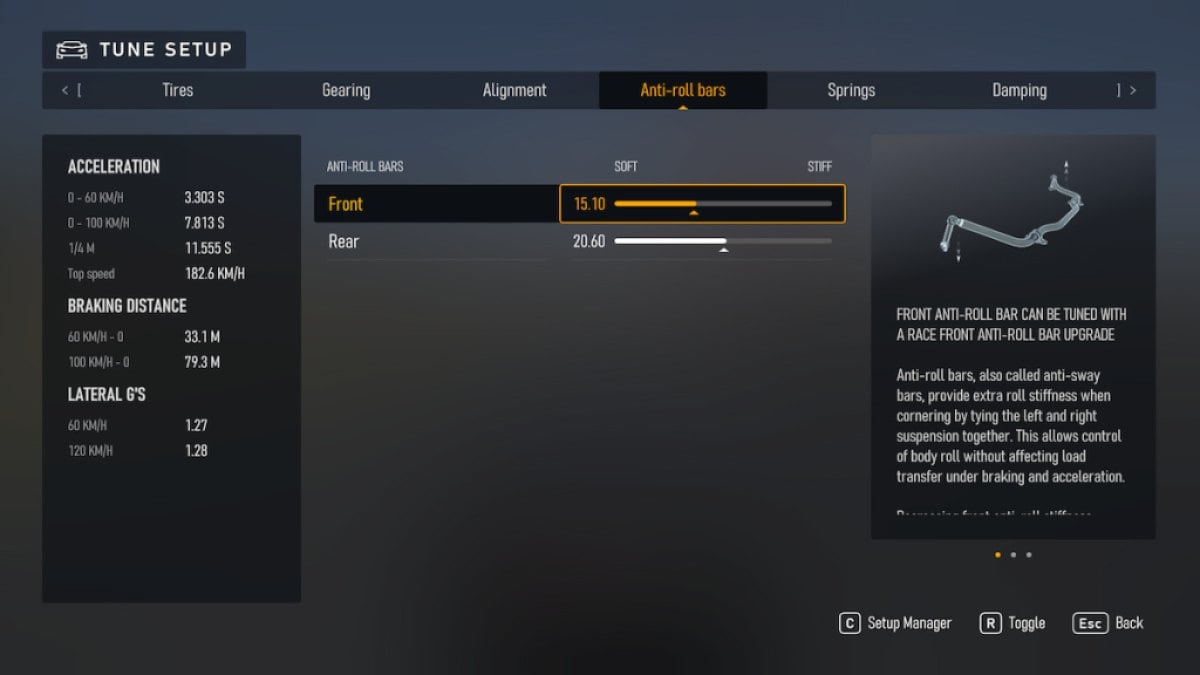
Tires
The lower the pressure of the tire, the more it will deform, and the contact patch—the portion of the tire that is in contact with the track—will be bigger. Therefore, lower pressure equals more grip. But if the pressure is too low, it will also produce more resistance (particularly when turning). Tire models are not as realistic in Forza Motorsport as in other sim-racing games, so I try to run them towards the soft side (without going to extremes and affecting the overall speed).
Gearing
Running a shorter gear ratio will give you more acceleration and sacrifice top speed, while running longer gear ratios will do the opposite (i.e. sacrifice acceleration in favor of higher maximum speeds). Gearing is mostly track-dependent, which is why I generally run longer gear rations on tracks that have long straights and shorter gear ratios for the ones that have more twisting sections.
Alignment
Alignment is separated into three different settings: Camber, Toe, and Caster.
Camber
Camber is the inward or outward angle of the tires when viewed from the front of the vehicle; when the camber is negative, the upper part of the tire is tilted inwards. When turning the centrifugal forces make the car tilt to the outside, the wheels will tilt with the vehicle. Therefore, to keep the outer wheels as vertical as possible, I tend to run a slight degree of negative camber. Although this also affects the inner wheels in any given turn, the outer wheels are the ones doing the heavy work.
Toe
If you look at the car from above, Toe is the angle of the tires about the longitudinal axis of the vehicle. If you use your own feet as a reference, toe-in is when you point your toes to the center and toe out is when your feet are pointing outwards.
You can add toe out on the front to make the car more responsive when turning, but this will induce turn-in oversteer. I recommend you never run toe out on the rear because this could add too much power oversteer.
Toe-in on the front tires will reduce responsiveness and induce brake-understeer; while a low degree of toe-in on the back tires can make the car feel more stable.
Be mindful the more toe you put in your wheels, the more you will subtract from the optimal traction of the tire, so as a general rule, you want to keep these as close to zero as possible.
Caster
Caster is the vertical degree of inclination of the suspension about the ground. It generally affects the feedback and hardness of the steering, but if you are playing on a gamepad, you shouldn't bother about this, and if you have a steering wheel, you can always configure the force feedback settings from the wheel itself. So I recommend leaving this setting on default.
Anti-roll Bars
These bars are meant to resist the lateral movement of the car, which happens when we turn into a corner. The softer the anti-roll bar, the more grip the car has. So you can play with the front and the rear axle separately to affect how much grip you give to each set of tires. Remember when we spoke about balance? If you give more grip to the front, you will have a more responsive and 'oversteery' car, and if you give more grip to the rear you will have more stability and tend to understeer.
Whatever changes you make to the front anti-roll bar will have an impact on the entry of the corner, so if you are suffering from too much braking understeer, you can try softening the front (the opposite happens when you stiffen it).
As you accelerate and exit the corner, the weight of the car gets pushed back and suddenly the rear tires are doing most of the work. If you suffer from oversteering on corner exit, try softening the rear anti-roll bars. If you suffer from understeer when exiting the corner, try stiffening these.
Springs
The number indicated on the springs means the amount of force needed to compress them. Therefore, a higher number means a stiffer spring. Although a softer spring gives more grip to that axle, sometimes it is necessary to stiffen those up if we are running a low ride height and we feel the car is bottoming from time to time.
Ride height
Ideally, we would like to run the car as close as possible to the ground, as it can increase downforce and avoid unnecessary rolling (when the body of the car tilts sideways) and pitching (when the body tilts forward and backward). But the desirable low ride height is not always possible for several reasons: if the track is bumpy we will end up bottoming out, and to avoid that we might need to stiffen the springs, which in turn means less grip for our tires. As always, tuning is a game of compromises, so this is the approach I use:
- I set the anti-roll bars to my preferred car balance.
- I set the springs relatively soft to get a fair amount of grip for the tires.
- I lower the ride-height as much as possible for the circuit and test it.
- If I feel the chassis is bottoming out, I may have to increase the spring stiffness.
- Or I may have gone too low with the ride-height and need to raise it.
As always, remember affecting the spring stiffness — and as a consequence the grip levels of the front and rear axles — affects the balance of the car. That is to say, more grip on the front will induce oversteer, while more grip on the rear will induce understeer.
Damping
In Forza Motorsport, Dampers are split into two parameters:
- Bump refers to the speed of compression of the springs, such as when you brake and the weight of the car shifts forward, or when you turn and the weight shifts sideways.
- Rebound refers to the rate of decompression of the springs, like when you accelerate out of the corner and release the pressure from the front suspension.
The higher the value, the more resistant the spring becomes to change. And because we need the springs to be more responsive when compressing (during braking, turning, or going over curbs), the Bump parameter should be lower (softer) than Rebound.
I normally play with the dampers to fix issues with the body roll and pitching, as explained when we talked about ride height. If the car is unpredictable when it goes over bumps or when the body rolls to the side, I reduce the damper values. If it feels too unresponsive, I do the opposite.
Suspension Geometry
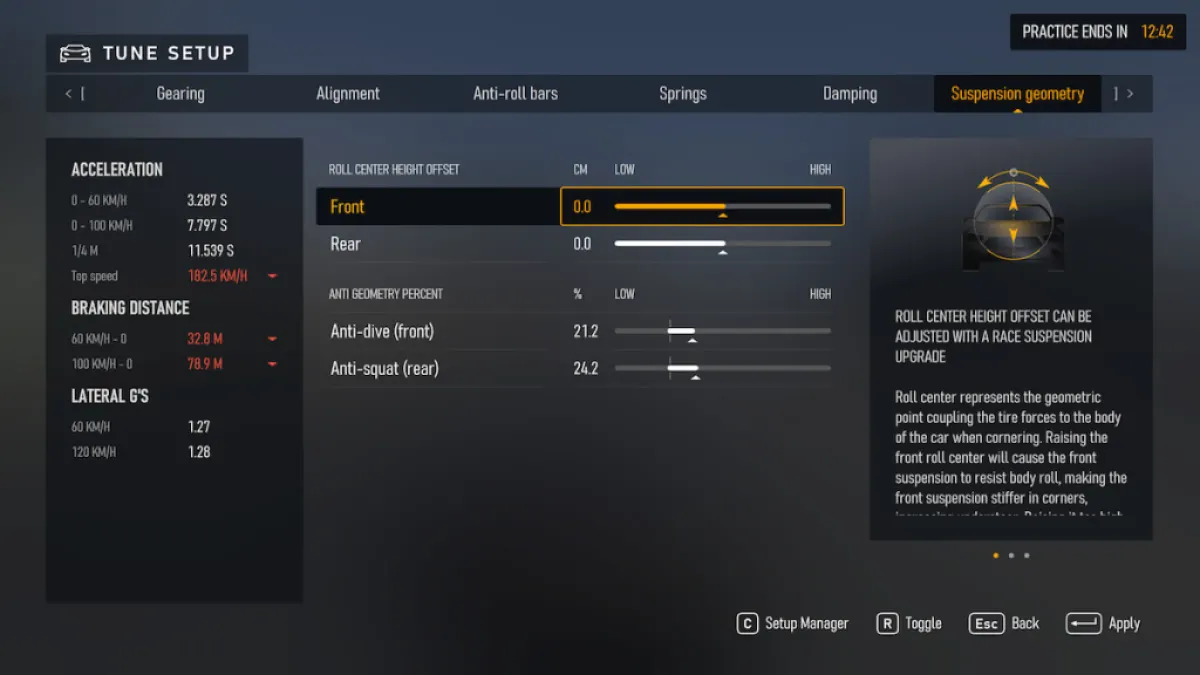
The weight distribution of the car changes when we brake, turn or accelerate. Braking before a corner makes the weight shift towards the front of the car, increasing the load on the front tires. You can offset the roll center height to affect the balance of the car and cure understeer or oversteer.
- Anti-dive geometry refers to the capability of the suspension to create an upward force into the chassis to counteract the downward force of the car pitching under braking. In other words, it is a force that prevents the nose of the car from bottoming out under hard braking.
- Anti-squat is a similar force that acts on the rear axle, preventing the rear suspension from bottoming out under heavy acceleration.
These two can be used as measures to prevent the car from bottoming out. But since typically you would need to know what is the ideal operation range of the suspension (which the game doesn't tell you), I tend to leave this on default.
For more on Forza Motorsport, check out Forza Motorsport is pushing tech to the next level here on Pro Game Guides.


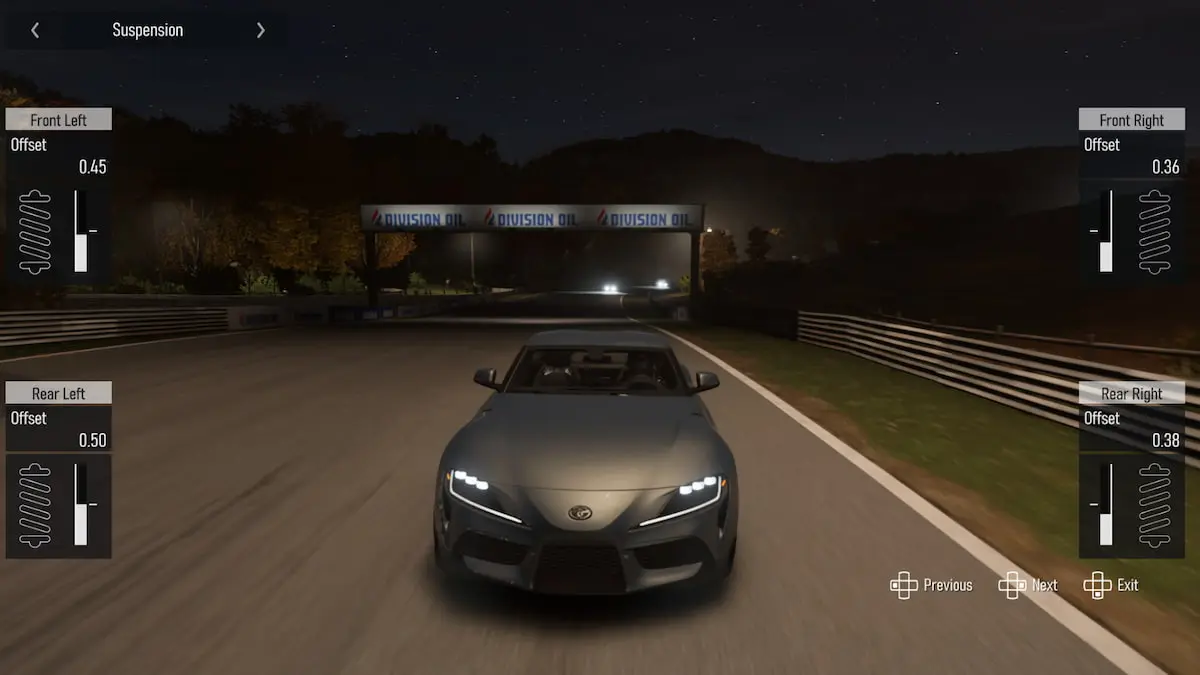
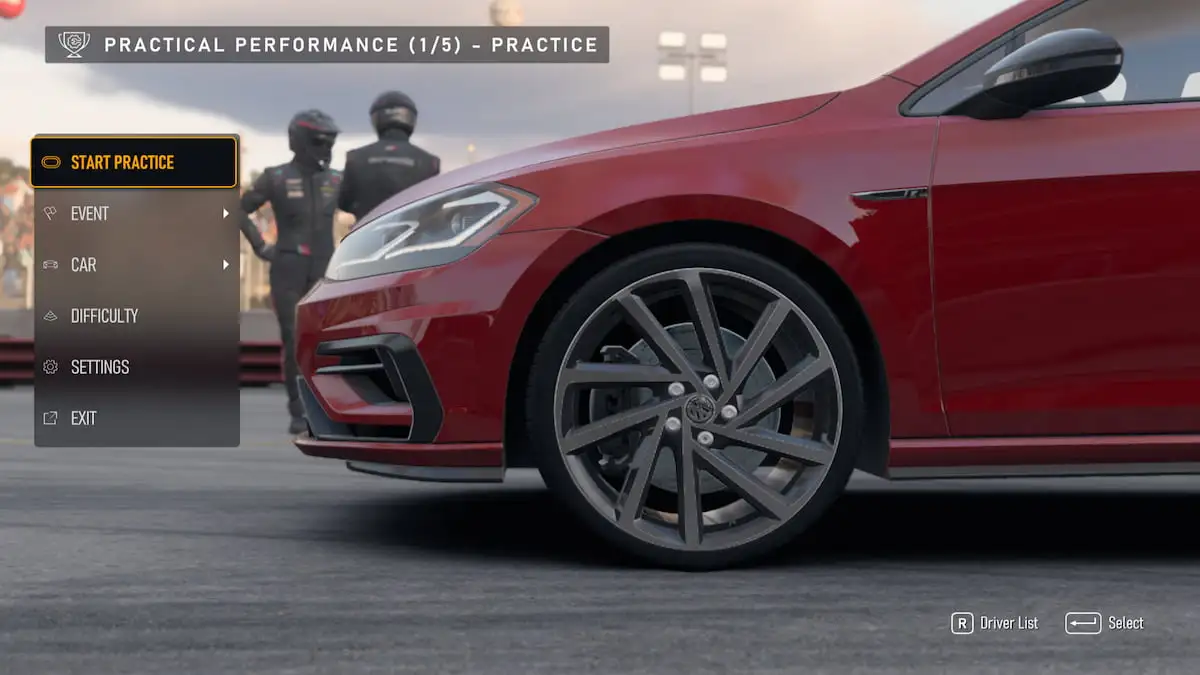
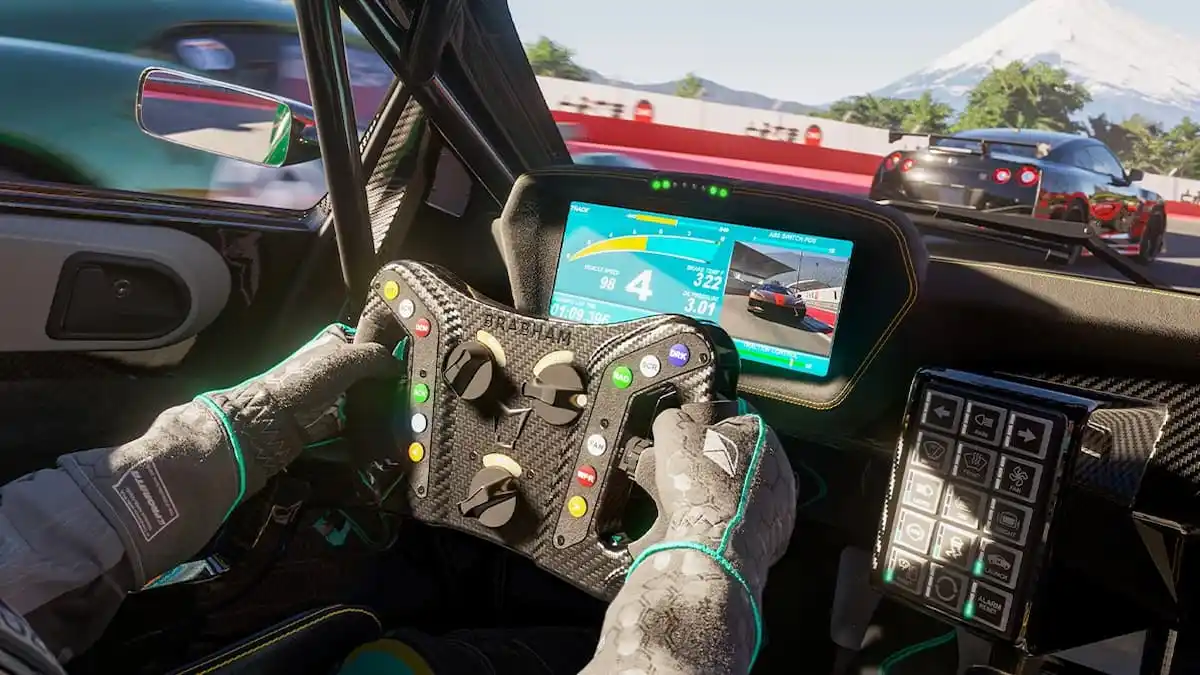
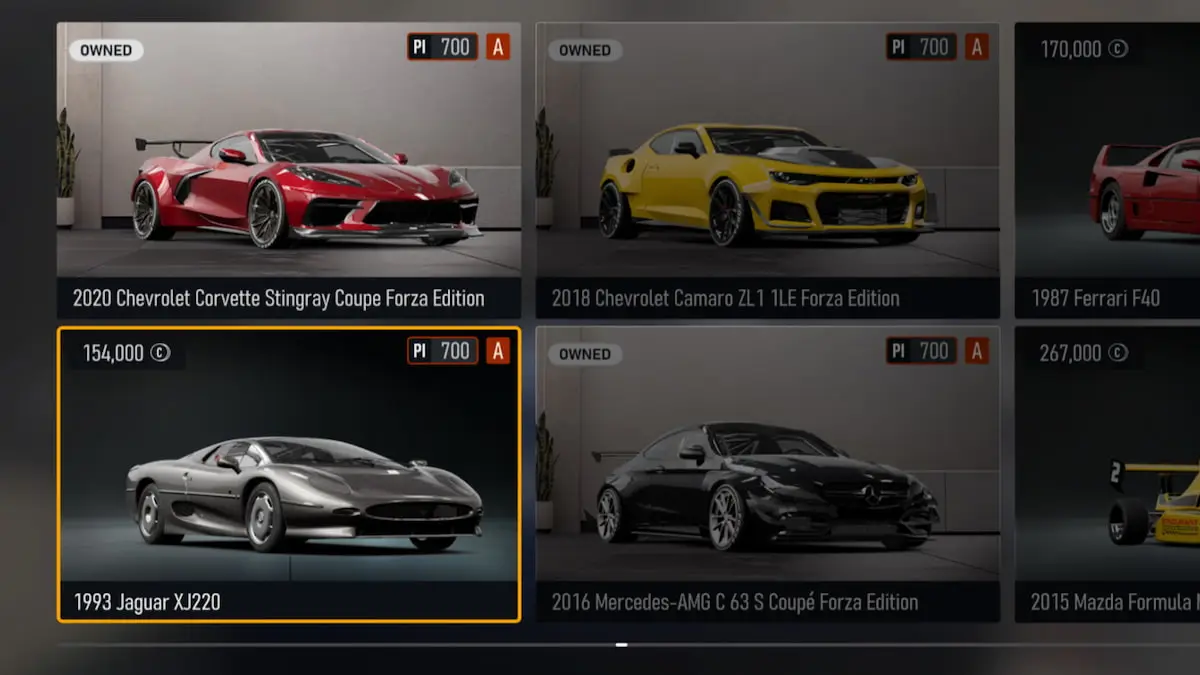
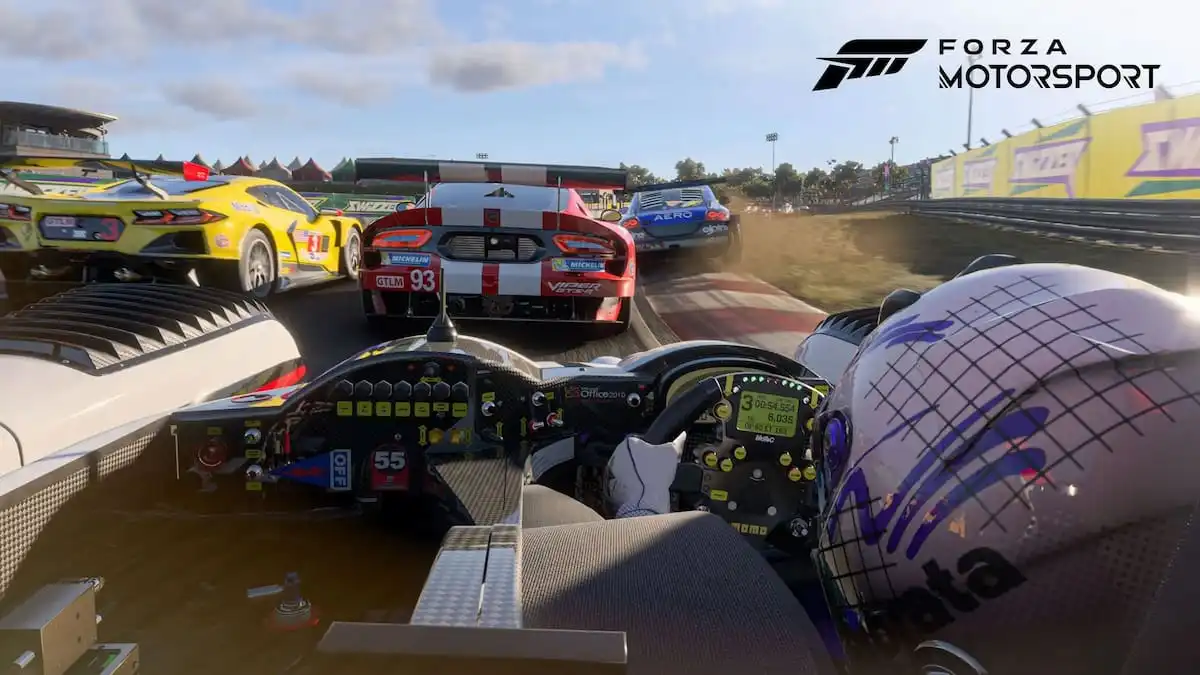
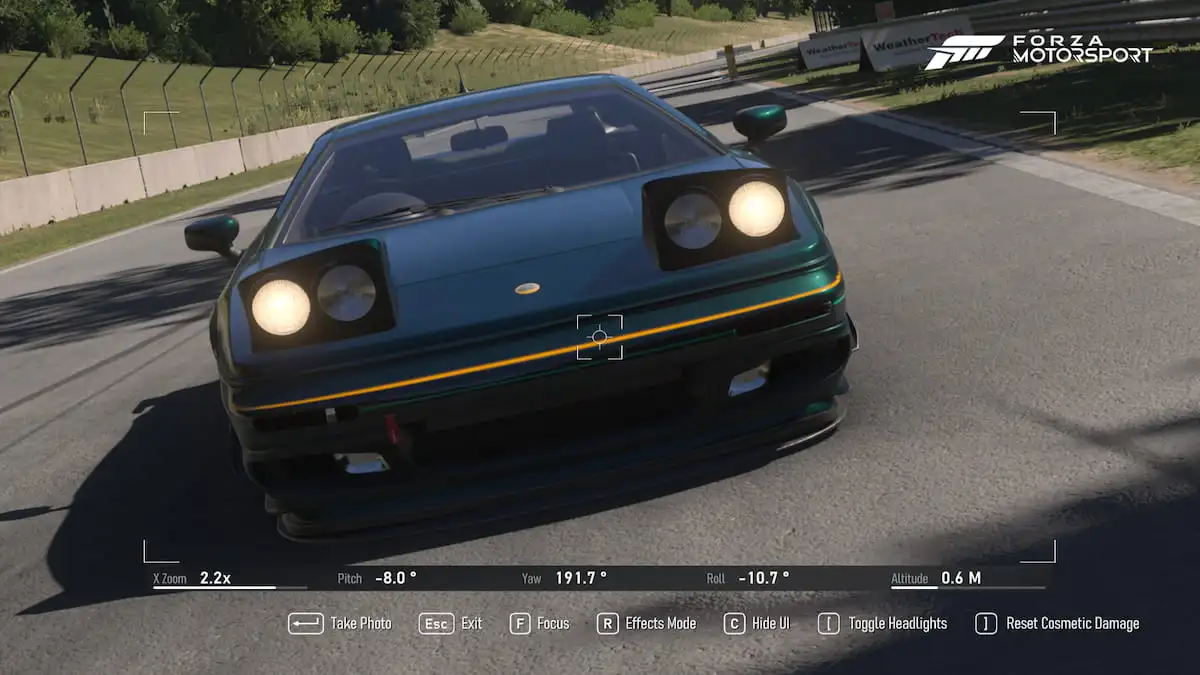
Write A Comment
How to tune your car in Forza Motorsport
This site is protected by reCAPTCHA and the Google Privacy Policy and Terms of Service apply.